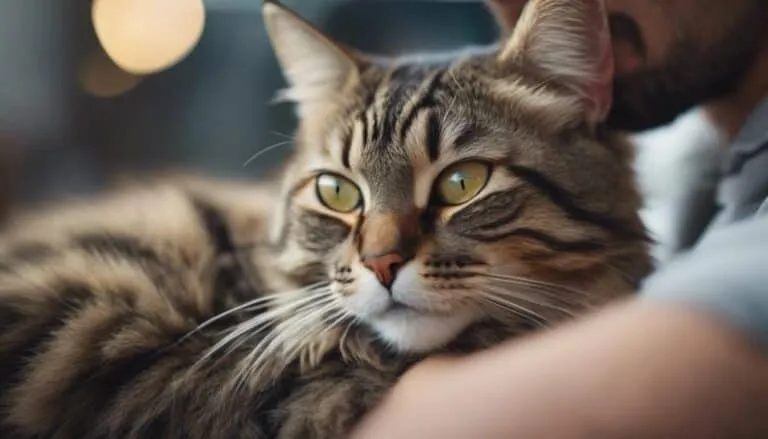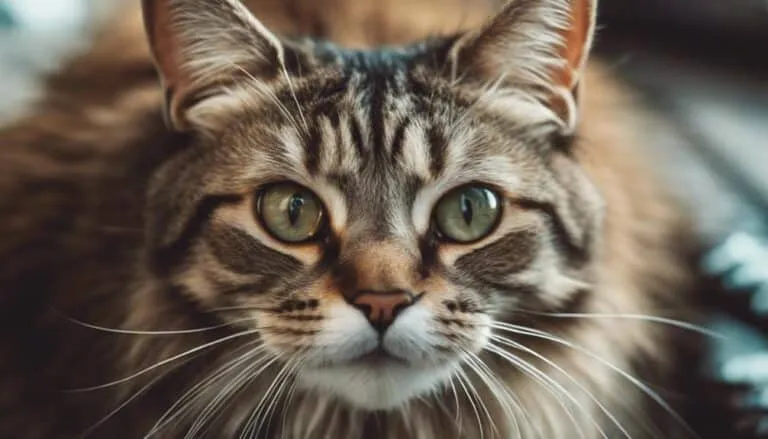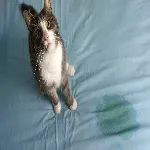The Best Fluffy Pancakes recipe you will fall in love with. Full of tips and tricks to help you make the best pancakes.

In the realm of human-animal interactions, there are certain assumptions that we hold dear, one being that cats are impervious to the common flu strains that afflict humans. However, recent scientific research has unveiled a surprising truth: cats can, in fact, catch the flu from humans. This revelation has sparked a considerable amount of interest and concern among pet owners, as it challenges our preconceived notions about the transmissibility of the flu across species.
With implications for both feline and human health, it becomes crucial to explore the dynamics of this cross-species infection, shedding light on the likelihood and severity of such transmissions. This article will delve into the intricacies of flu transmission between humans and cats, while also addressing the distinction between the flu and feline upper respiratory infections.
By doing so, it aims to equip cat owners with the knowledge necessary to protect their furry companions and themselves from the flu and related respiratory illnesses.
Key Takeaways
- Cats can get several seasonal flu viruses, including avian flu, but the flu is much less severe for cats compared to humans.
- Cats can contract the flu the same way people do, through saliva, sneezing, coughing, and contact with infected molecules on surfaces.
- Transmission of the flu from humans to cats is rare, but it is believed to be more likely than the opposite.
- Cats can also get feline upper respiratory infections, which have similar signs of illness to the flu but are caused by different viruses. Vaccines can help prevent many cases of cat flu, but they cannot eliminate the risk entirely.
How Cats Can Catch the Flu
Cats can contract the flu through various means, including direct contact with infected individuals or surfaces, making it important for pet owners to understand how cats can catch the flu. The flu can be transmitted to cats through saliva, sneezing, and coughing, as well as contact with infected molecules on surfaces.
While the flu is much less severe for cats compared to humans, it is still important to be aware of the symptoms. Flu symptoms in cats can include runny eyes or nose, sneezing, coughing, lethargy, and loss of appetite.
Although it is rare for cats to get the flu from humans, it is still possible. To prevent flu transmission, it is important to practice good hygiene and limit contact between cats and infected individuals.
Additionally, if a cat shows flu-like symptoms, it is advisable to consult a veterinarian for proper diagnosis and treatment.
Signs of the Flu in Cats
The symptoms of the flu in cats can vary but often include respiratory issues and a decrease in appetite. Cats can contract the flu through saliva, sneezing, coughing, and contact with infected molecules on surfaces. Unlike humans, the flu is much less severe for cats.
Common signs of the flu in cats include runny eyes or nose, sneezing, coughing, lethargy, and loss of appetite. It is important to note that flu symptoms in cats may be less noticeable compared to humans. Cats can get the flu from humans if the virus is present in the household, although transmission is rare.
The prevalence of flu in cats is lower compared to humans, and the differences in flu symptoms between cats and humans highlight the need for awareness and proper care for our feline companions.
Likelihood of Flu Transmission Between Humans and Cats
Transmission of the flu between humans and cats is rare, but it is possible for cats to catch the flu from their human counterparts. While the likelihood of flu transmission from humans to cats is low, there are certain factors that can affect the severity of the flu in cats.
Here are some key points to consider:
- Flu transmission risks:
- Cats can contract the flu from humans through saliva, sneezing, coughing, and contact with infected molecules on surfaces.
- The virus can be present in the household, making transmission more likely.
- Cats may show mild symptoms, making it difficult to detect transmission.
- Factors affecting flu severity in cats:
- Internal factors and overall immunity play a role in the severity of flu symptoms in cats.
- Cats with compromised immune systems may experience more severe symptoms.
- Cats can recover from the flu once the virus runs its course.
It is important to understand the potential for flu transmission between humans and cats to take appropriate precautions and ensure the well-being of both.
Cat Flu Vs. Feline Upper Respiratory Infections
Flu transmission between humans and cats is rare, but it is important to distinguish between cat flu and feline upper respiratory infections to understand the various causes and symptoms associated with each condition.
Cat flu, caused by feline calicivirus and herpesvirus, shares some similarities with feline upper respiratory infections but is not the same.
Feline upper respiratory infections can be caused by various pathogens including feline herpesvirus, calicivirus, mycoplasma, Bordetella, and feline chlamydiosis. Symptoms of feline upper respiratory infections include lethargy, sneezing, coughing, mouth ulcers, eye ulcers, appetite loss, fever, nasal and eye drainage, and difficulty breathing.
Vaccines can help prevent many cases of cat flu, but they cannot eliminate the risk entirely. Treatment for feline upper respiratory infections may include supportive care, antiviral medications, antibiotics, and managing symptoms such as fever and congestion.
Regular vet visits and vaccination schedules are crucial in protecting cats from these respiratory infections.
Vaccination for Cat Flu
Vaccination is an essential measure in protecting cats against the feline flu caused by feline calicivirus and herpesvirus. It is important for cat owners to understand the effectiveness and importance of vaccinating their feline companions. Here are some key points to consider:
- Vaccination is highly effective in preventing the feline flu and reducing the severity of symptoms.
- Regular vaccination can significantly reduce the risk of transmission from humans to cats, as well as between cats.
- Vaccination is especially crucial for kittens, as their immune systems are still developing and they are more susceptible to the virus.
- Vaccinating cats not only protects them from the flu but also helps prevent the spread of the virus within the feline population.
Protecting Cats From Human Flu Strains
Regular vaccination against feline calicivirus and herpesvirus is crucial in safeguarding cats from the feline flu. It also plays a significant role in protecting them against human flu strains.
While cats can contract the flu from humans, transmission is rare. However, it is important to take precautions to prevent flu transmission and protect our feline companions.
Flu symptoms in cats may include runny eyes or nose, sneezing, coughing, lethargy, and loss of appetite.
To protect cats from human flu strains, it is essential to practice good hygiene. This includes washing hands before and after interacting with cats.
Additionally, if someone in the household has the flu, it is recommended to limit close contact with cats. Ensuring that cats receive regular vaccinations can strengthen their immune system and reduce the risk of flu transmission.
Conclusion
In conclusion, it is now evident that cats can contract the flu from humans, highlighting the importance of understanding the dynamics of this cross-species infection.
Vaccination and preventive measures play a crucial role in protecting cats from human flu strains and related respiratory illnesses.
By staying informed and taking necessary precautions, cat owners can ensure the well-being of their feline companions.
Just as a vigilant sentinel guards a fortress, responsible pet owners can shield their cats from the unseen dangers of the flu.








